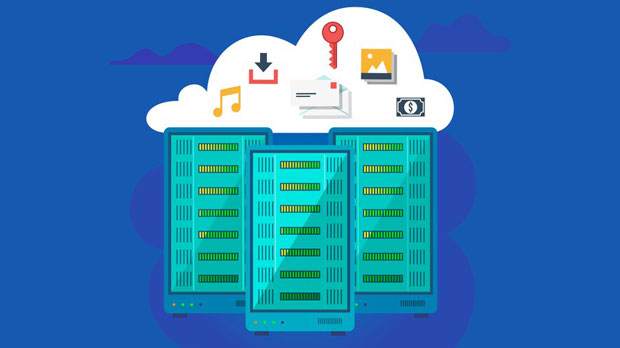In the world of video streaming, ensuring seamless access to platforms like YouTube is a key concern for many users. One of the methods that people explore to enhance their experience is the use of proxies, particularly sock s5 proxies. But does SOCKS5 provide a better solution for streaming videos, such as those on YouTube? This article will delve into whether SOCKS5 proxies offer significant advantages for video streaming, comparing them with other types of proxies and analyzing the potential benefits they bring to users. By the end, you'll have a clearer understanding of whether SOCKS5 proxies are the right choice for your video streaming needs. What is a socks5 proxy?Before we dive into how SOCKS5 proxies work for streaming, it's important to understand what a SOCKS5 proxy is. SOCKS (Socket Secure) is an internet protocol that routes network packets between a client and server through a proxy server. SOCKS5 is the latest version of this protocol, offering enhanced features compared to its predecessors.The primary advantage of SOCKS5 is its flexibility and ability to support a wide variety of traffic types, including HTTP, HTTPS, FTP, and even P2P (peer-to-peer) services. This versatility makes it suitable for various use cases, such as online gaming, torrenting, and, of course, video streaming.Advantages of Using SOCKS5 for Video Streaming1. Speed and PerformanceOne of the main concerns when streaming videos online is the speed and performance of the connection. SOCKS5 proxies are known for providing fast connections, especially when compared to traditional HTTP proxies. This is due to the fact that SOCKS5 proxies do not alter the data in the same way HTTP proxies do, leading to less latency and fewer chances for buffering or interruptions during streaming.For platforms like YouTube, where high-speed streaming is essential to ensure smooth playback, a SOCKS5 proxy is a solid option. It can help users bypass regional restrictions or network throttling imposed by internet service providers, providing them with a faster and more reliable streaming experience.2. Enhanced Privacy and SecurityWhen streaming videos on platforms such as YouTube, privacy can be a concern. Many users seek ways to hide their real IP addresses to avoid tracking, geo-blocking, or censorship. SOCKS5 proxies offer excellent privacy benefits as they do not leak DNS queries or other personal data.Furthermore, SOCKS5 proxies offer enhanced security features, such as support for both UDP and TCP connections. This makes them a strong contender for users who want to protect their data while streaming videos, ensuring that their internet activity remains anonymous and secure.3. Flexibility in Handling Different Types of TrafficUnlike HTTP proxies, which are designed primarily for web traffic, SOCKS5 proxies can handle various types of traffic. This includes streaming data, which requires a stable and high-bandwidth connection. By supporting a range of protocols, SOCKS5 proxies are better equipped to handle the large data streams involved in video playback on platforms like YouTube.In contrast, other proxy types might struggle with video content due to their limitations in handling high-bandwidth traffic. SOCKS5 ensures that users can stream videos smoothly without experiencing interruptions, buffering, or poor-quality streams.Potential Drawbacks of Using SOCKS5 for StreamingWhile SOCKS5 proxies come with numerous advantages, they are not without their downsides. It’s important to consider the following potential drawbacks before deciding if SOCKS5 is the right choice for streaming.1. Availability of SOCKS5 ServersOne of the main challenges with using SOCKS5 proxies for streaming is the availability of reliable and fast SOCKS5 servers. Not all proxy providers offer high-quality SOCKS5 proxies, which could lead to slow connection speeds and poor performance. It’s crucial to select a trustworthy provider to ensure that the proxy servers are stable and capable of handling video streaming without disruptions.2. CostAnother factor to consider is the cost associated with SOCKS5 proxies. While some free proxy services may offer SOCKS5 proxies, they often come with limitations, such as slow speeds or security risks. For a reliable and fast connection, users may need to pay for premium SOCKS5 proxies. This can add up over time, making it an investment that needs careful consideration, especially for those who are streaming frequently.3. Complexity of SetupFor some users, setting up a SOCKS5 proxy can be more complex than using other types of proxies, such as HTTP proxies. SOCKS5 proxies often require additional configuration on both the client and server ends. This might not be ideal for those who are not tech-savvy or those who prefer a quick, plug-and-play solution.SOCKS5 vs Other Types of Proxies for StreamingTo fully understand the value of SOCKS5 proxies for video streaming, it's essential to compare them with other popular proxy types, such as HTTP and HTTPS proxies.1. SOCKS5 vs HTTP/HTTPS ProxiesHTTP and HTTPS proxies are specifically designed for web browsing and are often used for bypassing geo-restrictions or accessing content that is otherwise blocked. However, these proxies have limitations when it comes to handling video streaming traffic. They are often slower and may not be able to handle high-bandwidth video data as effectively as SOCKS5 proxies.Moreover, HTTP proxies are more likely to cause buffering or interruptions when streaming high-quality videos, especially when using platforms like YouTube. In contrast, SOCKS5 proxies are better equipped for handling large data streams, resulting in a smoother and more reliable streaming experience.2. SOCKS5 vs VPNs for StreamingVirtual Private Networks (VPNs) are another popular method for bypassing geo-restrictions and enhancing privacy while streaming. However, there are some key differences between SOCKS5 proxies and VPNs.While both SOCKS5 proxies and VPNs offer enhanced privacy by masking the user's IP address, VPNs provide additional encryption for internet traffic. This makes VPNs a more secure choice for users concerned with privacy and data protection. However, the added encryption can sometimes lead to slower speeds, which may affect the streaming experience.SOCKS5 proxies, on the other hand, offer faster connections without the extra encryption overhead. If speed is a priority for video streaming, SOCKS5 proxies might be a better choice, as they provide a balance between privacy and performance.Conclusion: Is SOCKS5 the Best Proxy for Streaming YouTube?In conclusion, SOCKS5 proxies offer several advantages when it comes to streaming videos, including high-speed connections, enhanced privacy, and the ability to handle various types of traffic. For users seeking a seamless streaming experience on platforms like YouTube, SOCKS5 proxies can provide a more reliable solution compared to other proxy types, such as HTTP or HTTPS proxies.However, it’s important to weigh the potential drawbacks, such as the availability of high-quality SOCKS5 servers, the cost, and the complexity of setup. By carefully considering these factors, users can determine whether SOCKS5 proxies are the right choice for their specific video streaming needs. Ultimately, SOCKS5 proxies can be a great option for users who prioritize speed and flexibility, but they may not be the best fit for those seeking maximum security or simplicity in setup.
Jun 24, 2025



































































